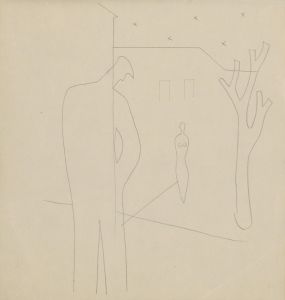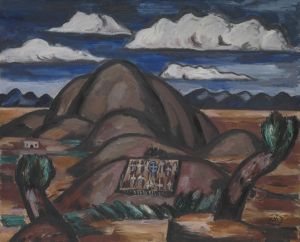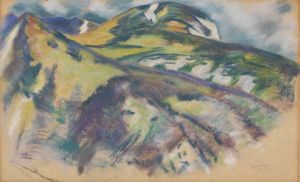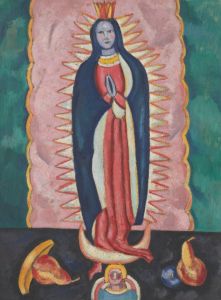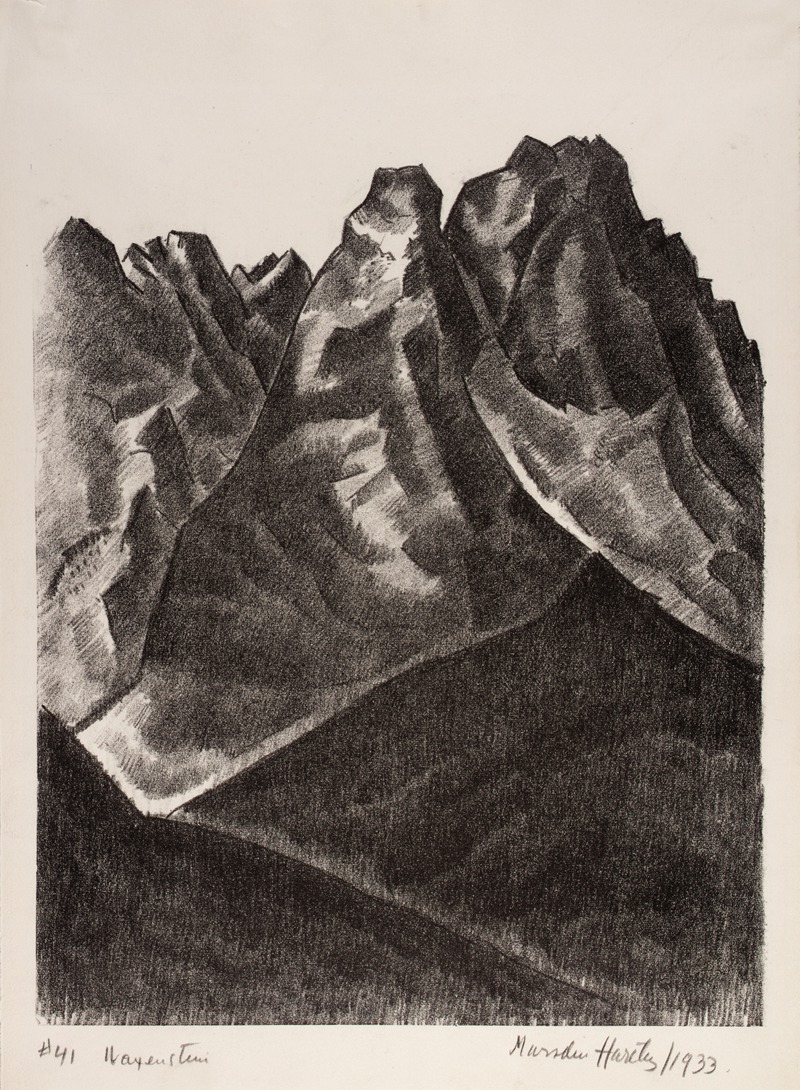
Waxenstein
A hand-painted replica of Marsden Hartley’s masterpiece Waxenstein, meticulously crafted by professional artists to capture the true essence of the original. Each piece is created with museum-quality canvas and rare mineral pigments, carefully painted by experienced artists with delicate brushstrokes and rich, layered colors to perfectly recreate the texture of the original artwork. Unlike machine-printed reproductions, this hand-painted version brings the painting to life, infused with the artist’s emotions and skill in every stroke. Whether for personal collection or home decoration, it instantly elevates the artistic atmosphere of any space.
Marsden Hartley was an American modernist painter known for his bold use of color and form, and his work often reflected his interest in spirituality and symbolism. One of his notable works is "Waxenstein," which is part of a series of paintings Hartley created during his time in Germany. This period was significant in Hartley's career as it marked a phase of intense creativity and experimentation with abstract forms.
"Waxenstein" was painted during Hartley's stay in Bavaria, Germany, around 1913-1915. This period was crucial for Hartley as he was deeply influenced by the European avant-garde movements, particularly German Expressionism. The painting reflects Hartley's fascination with the dramatic landscapes of the Bavarian Alps, where Waxenstein is a prominent mountain peak. The work is characterized by its vibrant colors and dynamic composition, capturing the essence of the natural landscape while also conveying a sense of emotional intensity.
Hartley's time in Germany was marked by his association with influential artists and movements. He was connected with the Der Blaue Reiter group, which included artists like Wassily Kandinsky and Franz Marc. This group was known for its emphasis on spiritual and symbolic content in art, which resonated with Hartley's own artistic vision. The influence of these artists and the surrounding environment is evident in "Waxenstein," where Hartley employs bold colors and abstract forms to evoke the spiritual and emotional essence of the landscape.
The painting is also notable for its use of symbolism, a recurring theme in Hartley's work. While "Waxenstein" primarily depicts a natural scene, Hartley's approach transforms it into a more abstract and symbolic representation. The use of color and form in the painting is not merely descriptive but serves to convey deeper meanings and emotions. This aligns with Hartley's belief in the power of art to express the unseen and the spiritual.
Hartley's German period, including works like "Waxenstein," is often regarded as one of the high points of his career. It was during this time that he developed a distinctive style that combined elements of abstraction with a deep emotional and spiritual resonance. This style would continue to influence his work throughout his life.
"Waxenstein" and other paintings from this period reflect Hartley's ability to synthesize his experiences and influences into a unique artistic vision. The painting stands as a testament to his skill in capturing the essence of a place while imbuing it with personal and symbolic significance. Today, Hartley's work, including "Waxenstein," is celebrated for its contribution to American modernism and its exploration of the intersection between the natural world and the spiritual realm.






